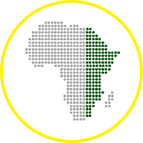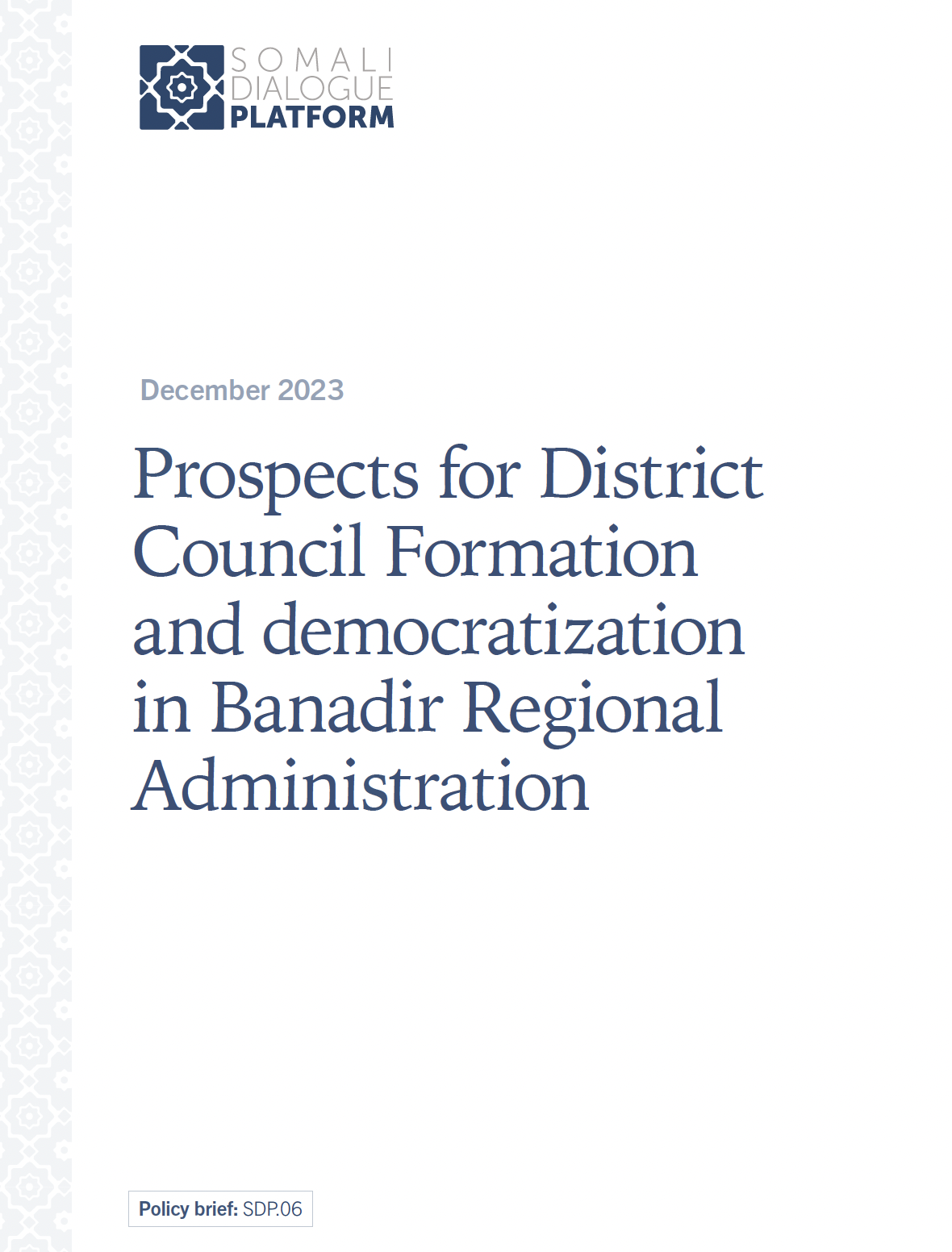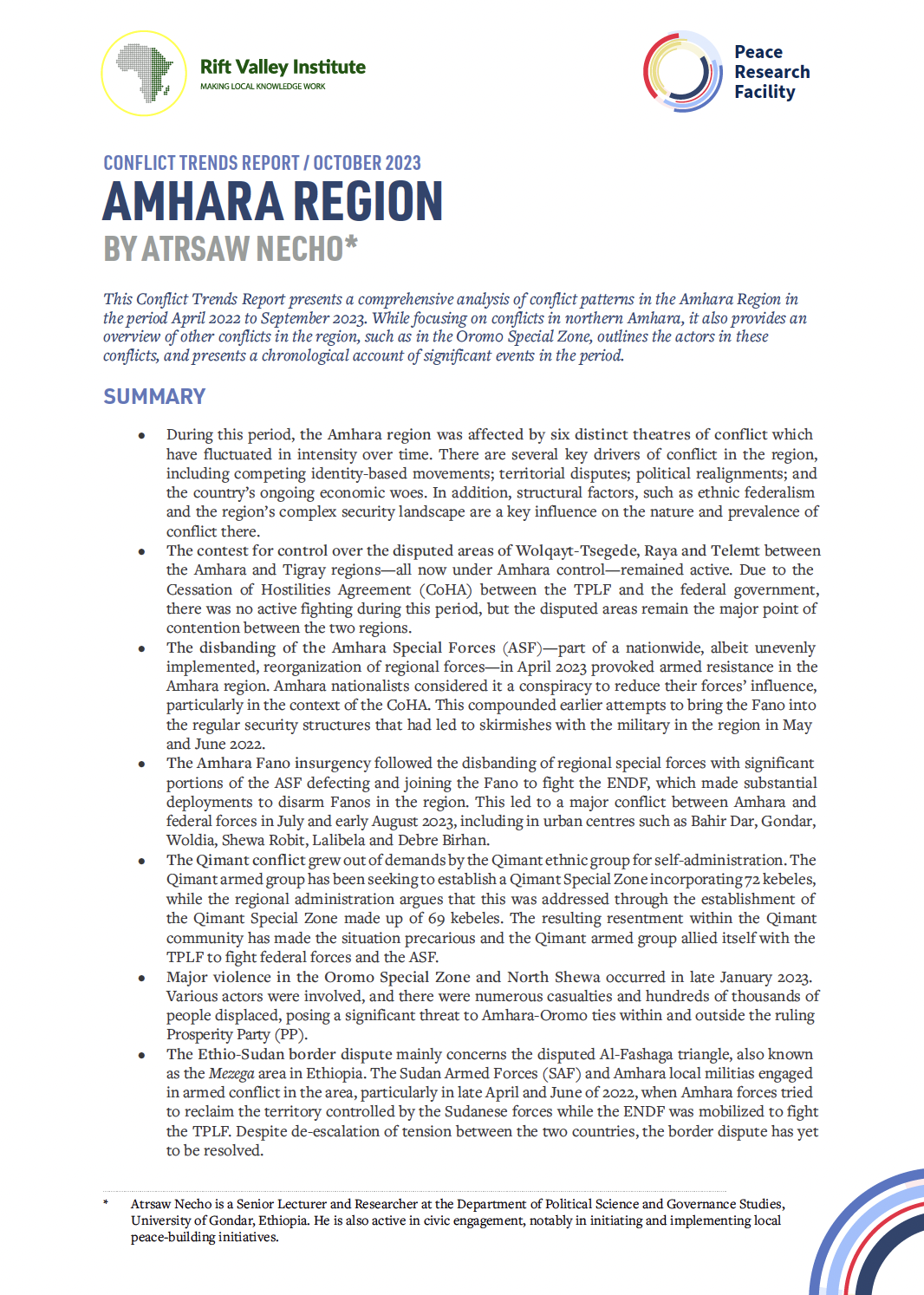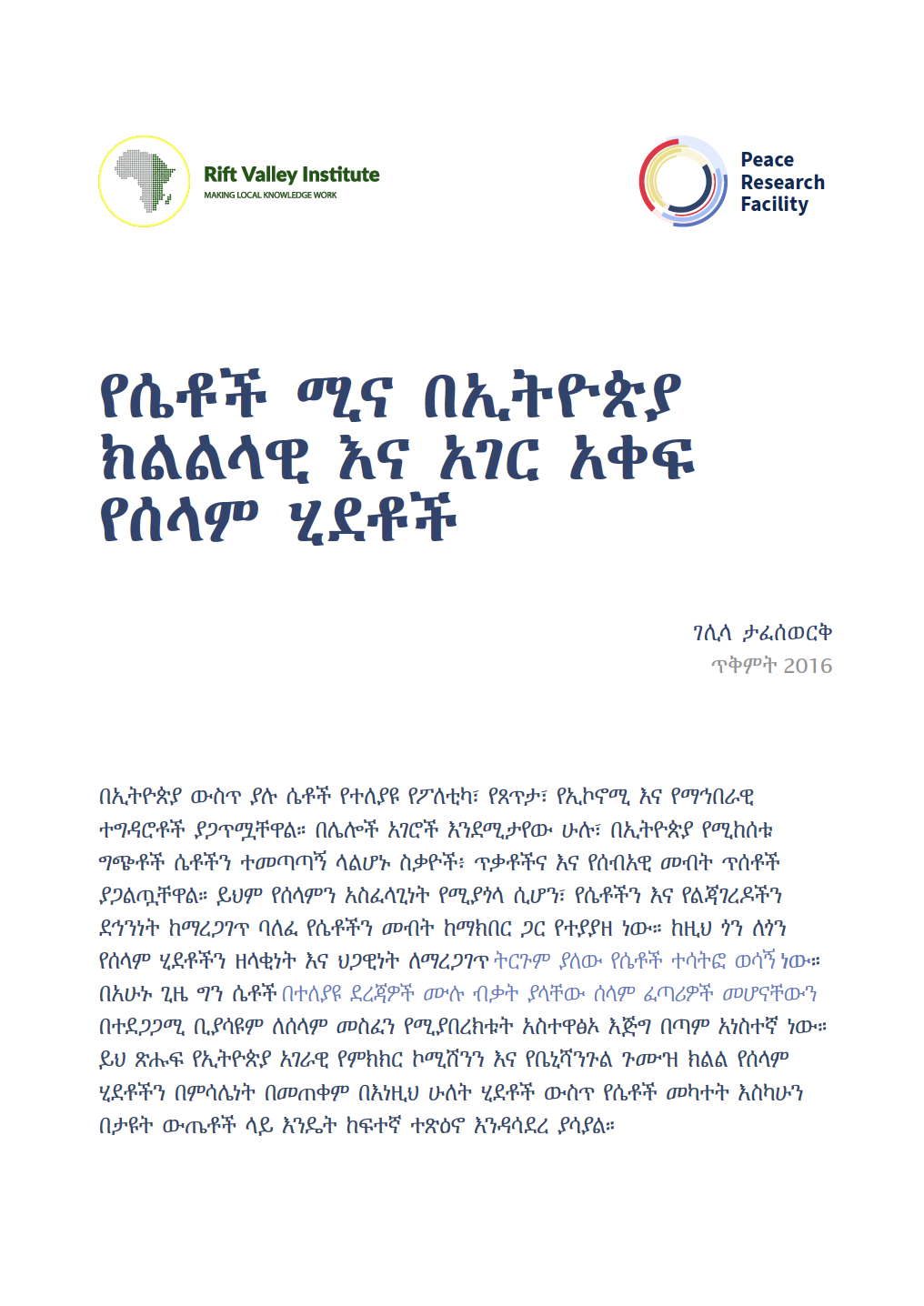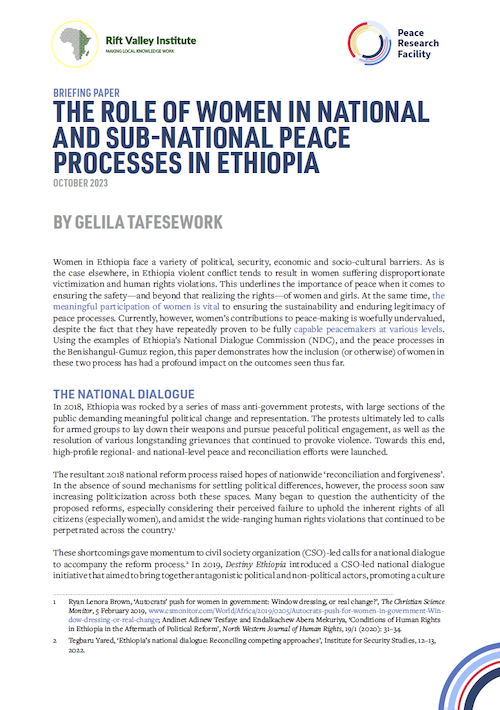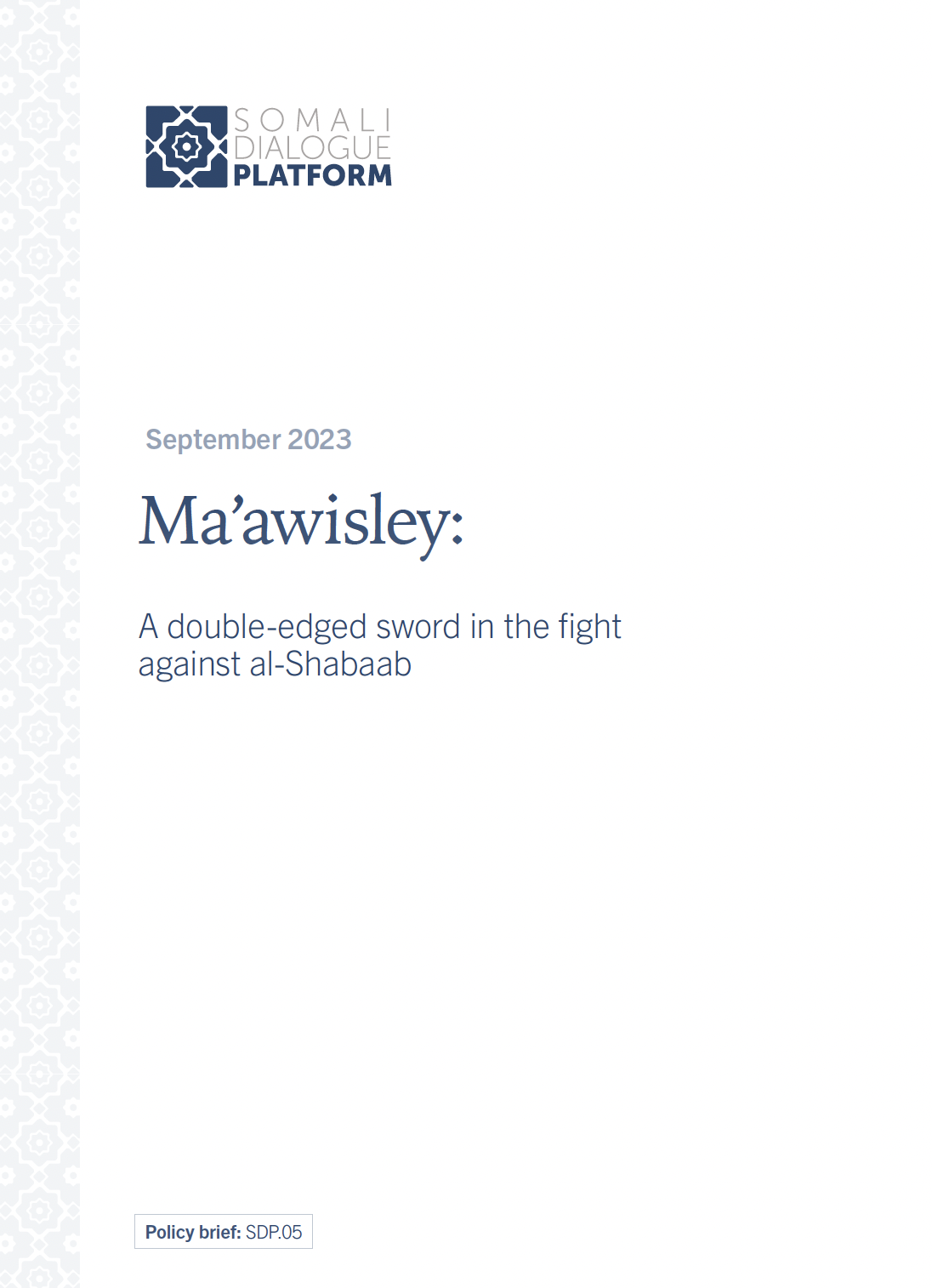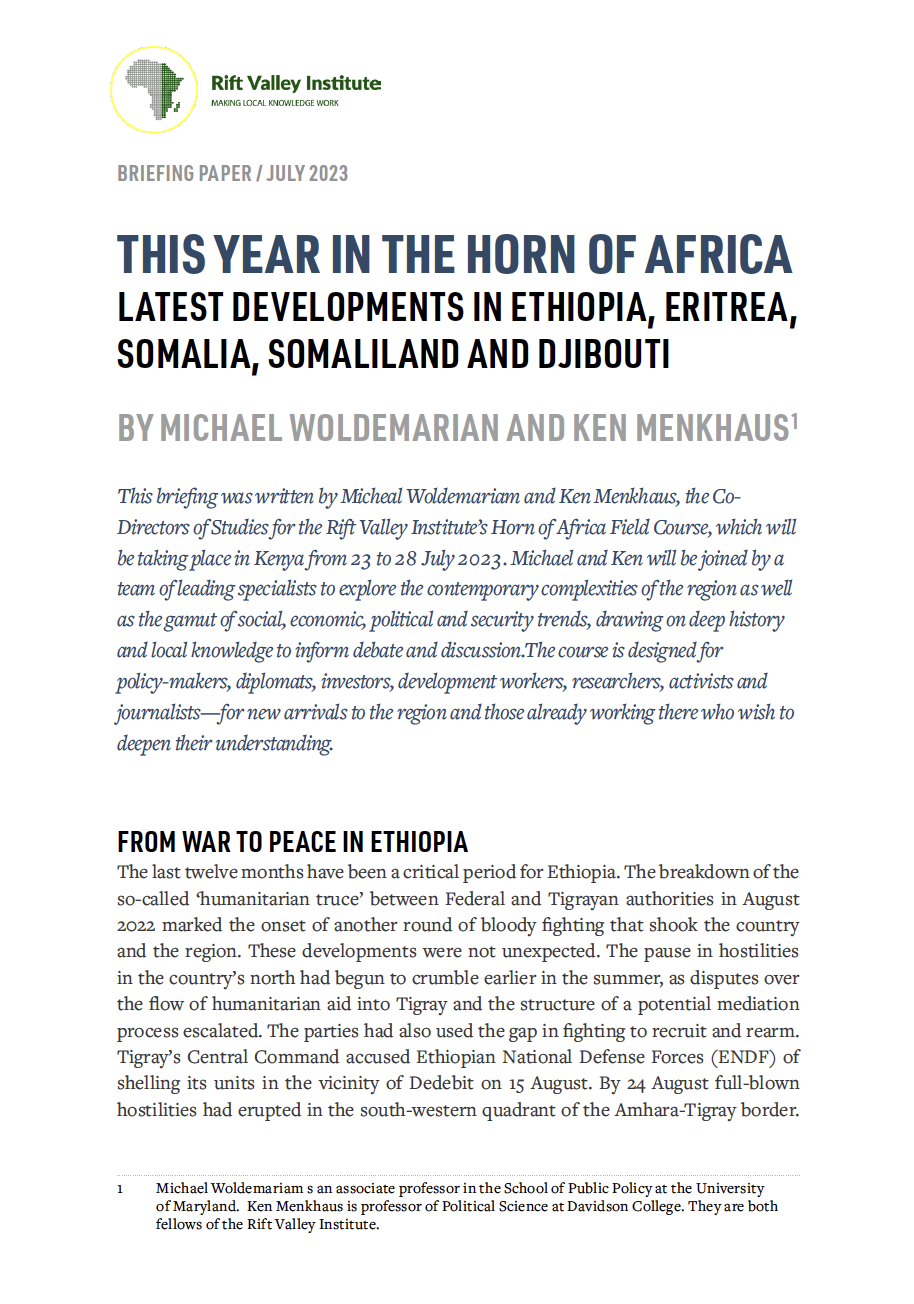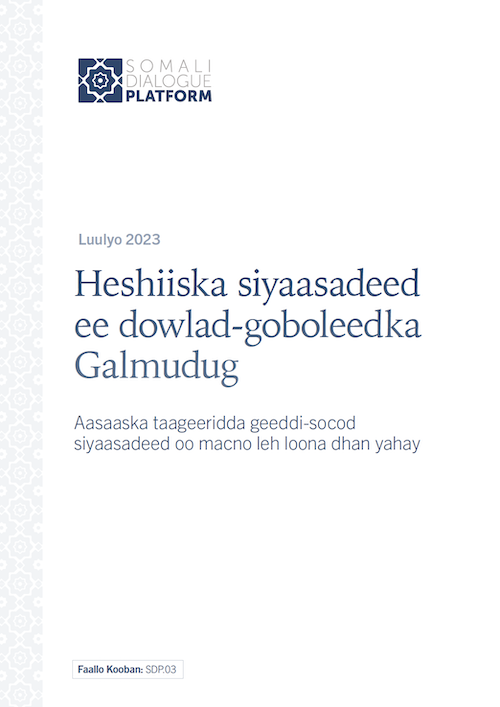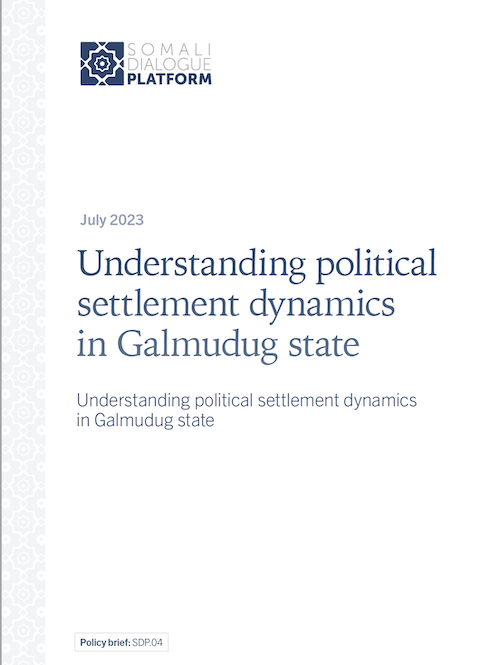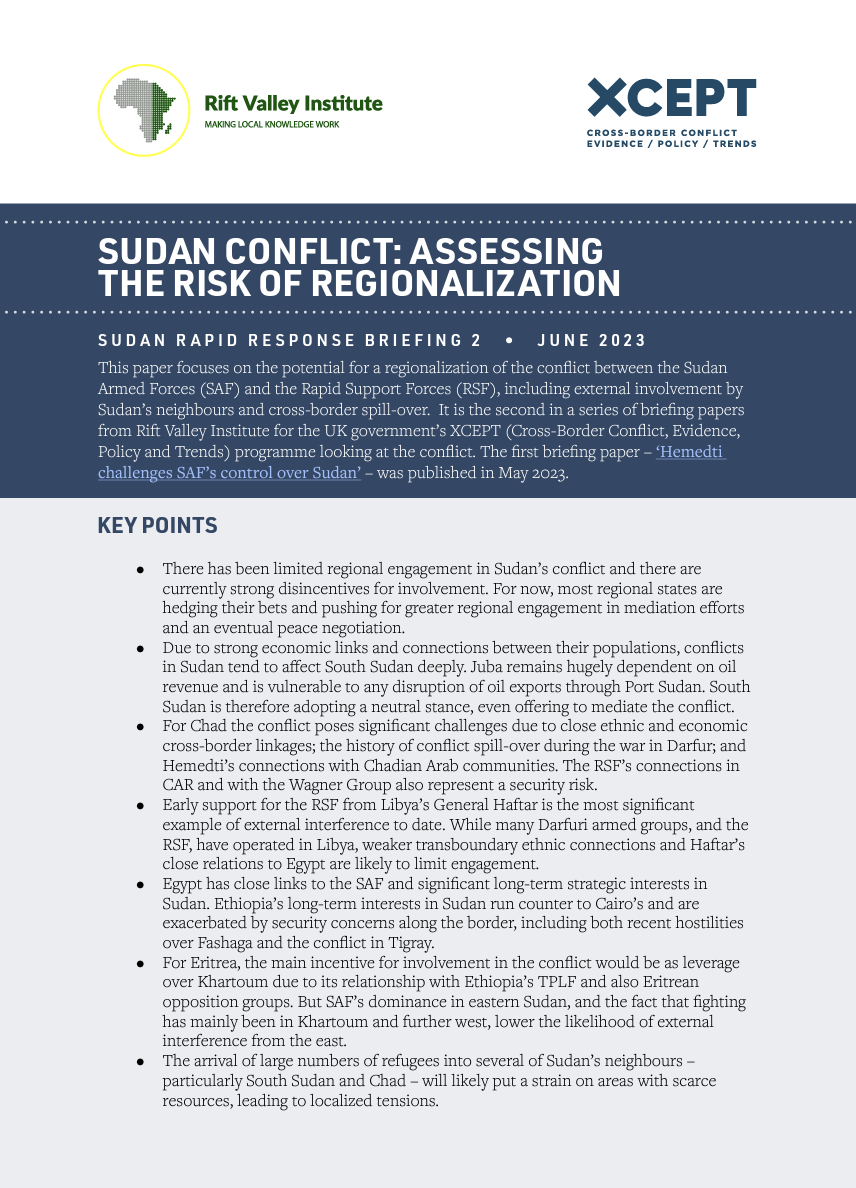Summary Find the Somali version of this briefing here. …
RVI publishes books, research reports, research papers, briefings and meeting reports in a range of formats. Publications cover policy, research, arts, culture and local knowledge in the countries of eastern and central Africa. Research publications—books, reports and papers—are peer-reviewed. Some RVI publications are also available in French and/or Arabic.
The RVI is a signatory of the Budapest Open Access Initiative (2001); all publications are free for download in PDF format under Creative Commons licences. The views expressed in books and reports published by the RVI are those of the authors, not the Institute.
SEARCH
PUBLICATION TYPE
LANGUAGE
REGION
COUNTRY
This Conflict Trends Report presents a comprehensive analysis of conflict patterns in the Amhara Region in the period April 2022 to September 2023. While focusing on conflicts in northern Amhara, it also provides an overview of other conflicts in…
በኢትዮጵያ ውስጥ ያሉ ሴቶች የተለያዩ የፖለቲካ፣ የጸጥታ፣ የኢኮኖሚ እና የማኅበራዊ ተግዳሮቶች ያጋጥሟቸዋል። በሌሎች አገሮች እንደሚታየው ሁሉ፣ በኢትዮጵያ የሚከሰቱ ግጭቶች ሴቶችን ተመጣጣኝ ላልሆኑ ስቃዮች፥ ጥቃቶችና እና የሰብአዊ መብት ጥሰቶች ያጋልጧቸዋል። ይህም የሰላምን አስፈላጊነት የሚያጎላ ሲሆን፣ የሴቶችን እና የልጃገረዶችን ደኅንነት ከማረጋገጥ…
Women in Ethiopia face a variety of political, security, economic and socio-cultural barriers. As is the case elsewhere, in Ethiopia violent conflict tends to result in women suffering disproportionate victimization and human rights violations. This underlines the importance of…
Introduction One of the most significant recent developments in the prolonged struggle against al-Shabaab in Somalia has been the success of military operations led by the Somali National Armed Forces and allied self-defence militias known as Ma’awisley. Ma’awisley—named after the…
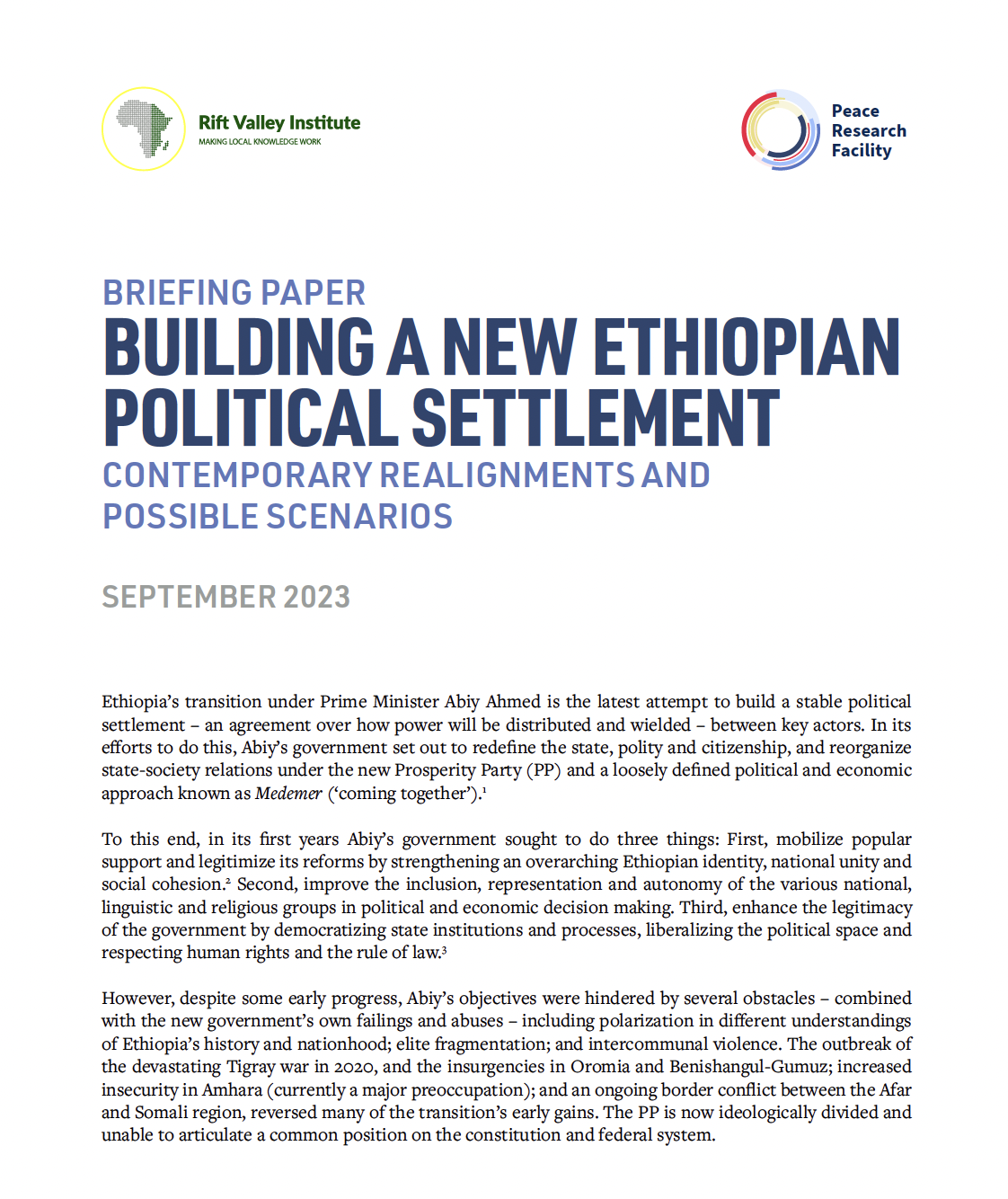
- Download
Ethiopia’s transition under Prime Minister Abiy Ahmed is the latest attempt to build a stable political settlement – an agreement over how power will be distributed and wielded – between key actors. In its efforts to do this, Abiy’s…
Latest Developments in Ethiopia, Eritrea, Somalia, Somaliland and Djibouti By Michael Woldermarian & Ken Menkhaus This briefing was written by Micheal Woldemariam and Ken Menkhaus, the Co-Directors of Studies for the Rift Valley Institute’s Horn of Africa Field Course,…
Hordhac Galmudug ayaa ilaa iyo dhawaanahan loo arkayay dowlad-goboleed ay colaado iyo kala qeybsanaan badani ka jiraan, oo ay qaabeeyeen colaadihii laga dhaxlay dagaalladii sokeeye ee Soomaaliya. Khilaafyada joogtada ah ee beelaha ku saleysanaa ee u dhexeeyay kooxaha siyaasadeed…
Introduction Galmudug state in Somalia was, until recently, seen as a region of conflict and fragmentation, shaped by the legacy of violence passed down from the Somali civil war. Due to the constant conflict between clan-based political groupings, it…
This paper focuses on the potential for a regionalization of the conflict between the Sudan Armed Forces (SAF) and the Rapid Support Forces (RSF), including external involvement by Sudan’s neighbours and cross-border spill-over. It is the second in a…
Recent Publications
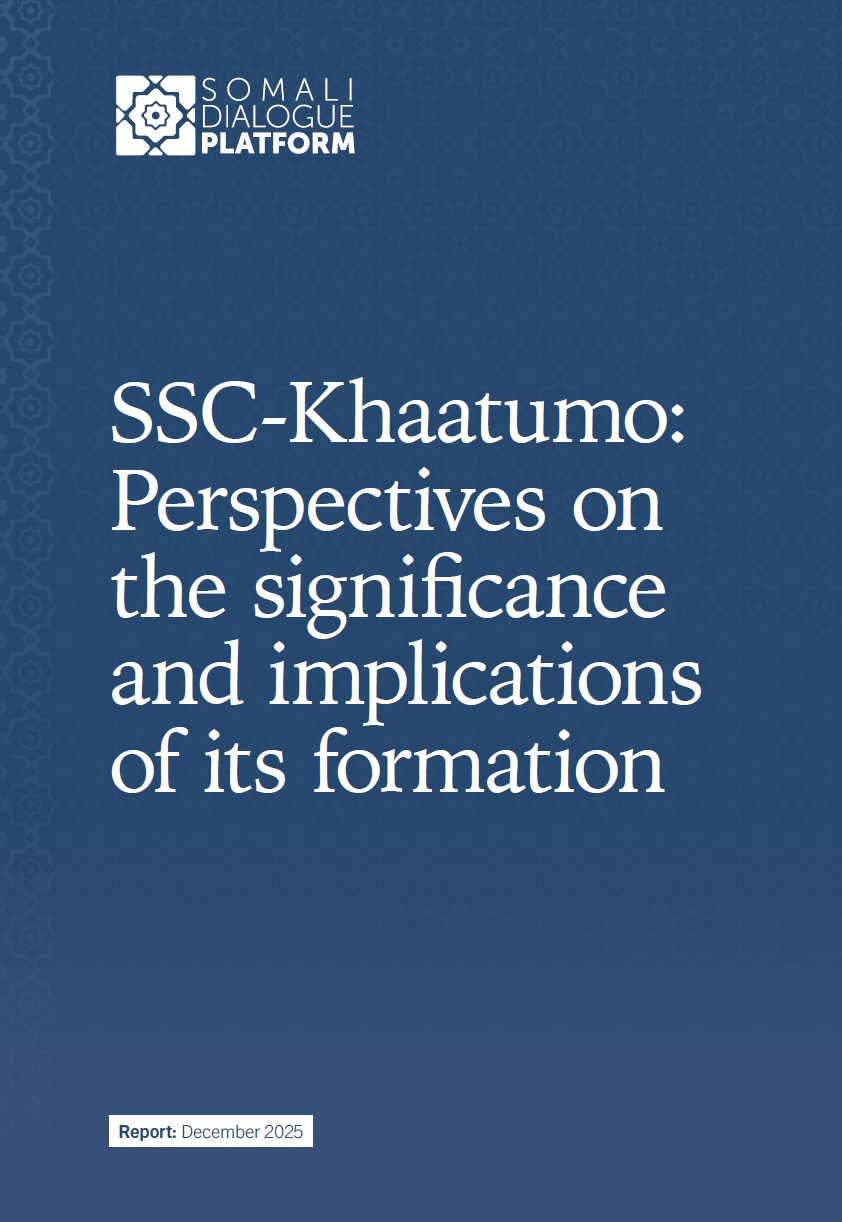
SSC-Khaatumo: Perspectives on the significance and implications of its formation
December 12, 2025
On 15 April 2025, during a visit to the city of Las Anod in Sool, Prime Minister Hassan Abdi Barre officially declared the federal government’s recognition of SSC-Khaatumo (SSC-K hereafter) as a federal member state, marking an important milestone in
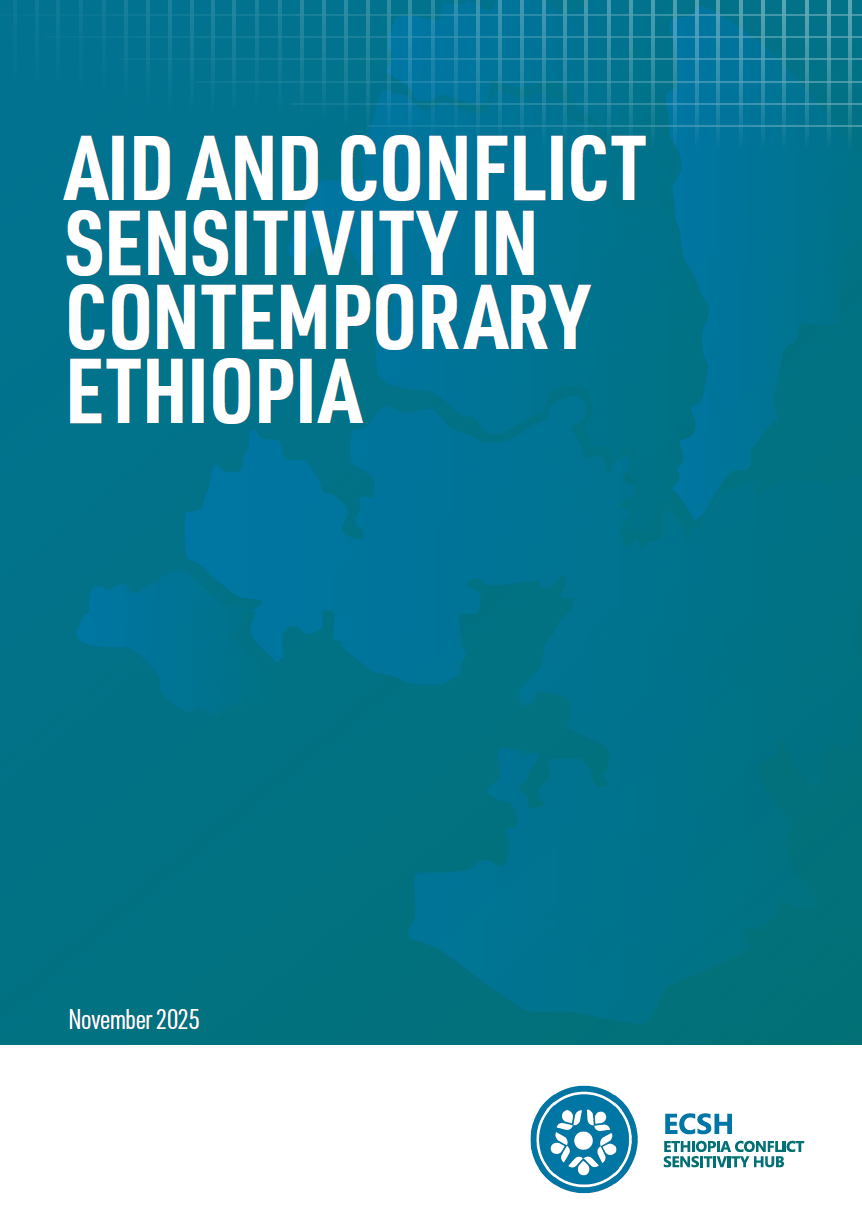
Aid and Conflict Sensitivity in Contemporary Ethiopia
November 17, 2025
This study assesses conflict sensitivity practices among humanitarian, development and peacebuilding (HDP) actors in Ethiopia. It seeks to raise awareness and foster a deeper understanding of the evolving aid landscape in the country while analysing the challenges that affect conflict-sensitive
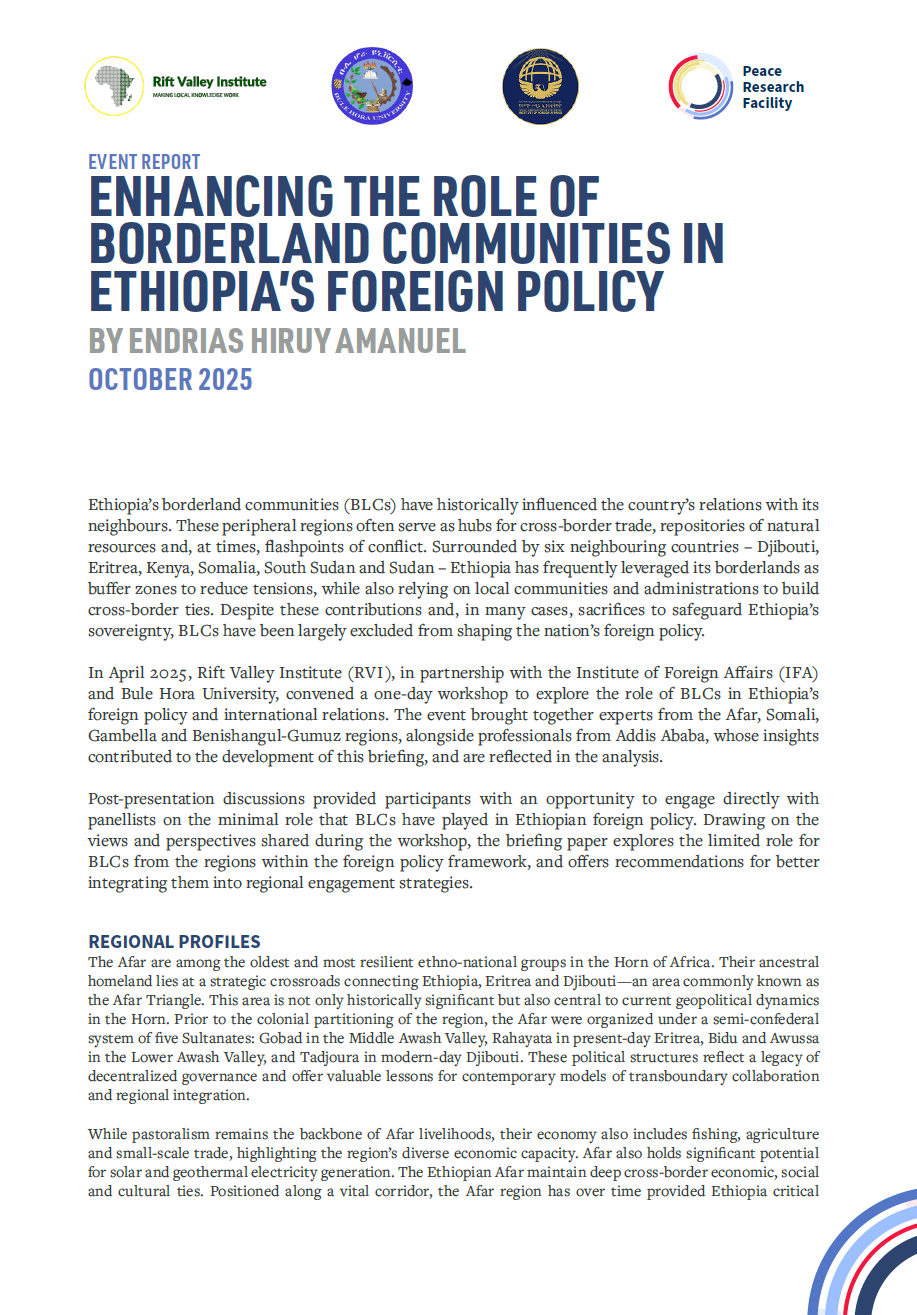
Enhancing the Role of Borderland Communities in Ethiopia’s Foreign Policy
October 15, 2025
Ethiopia’s borderland communities (BLCs) have historically influenced the country’s relations with its neighbours. These peripheral regions often serve as hubs for cross-border trade, repositories of natural resources and, at times, flashpoints of conflict. Surrounded by six neighbouring countries – Djibouti,
